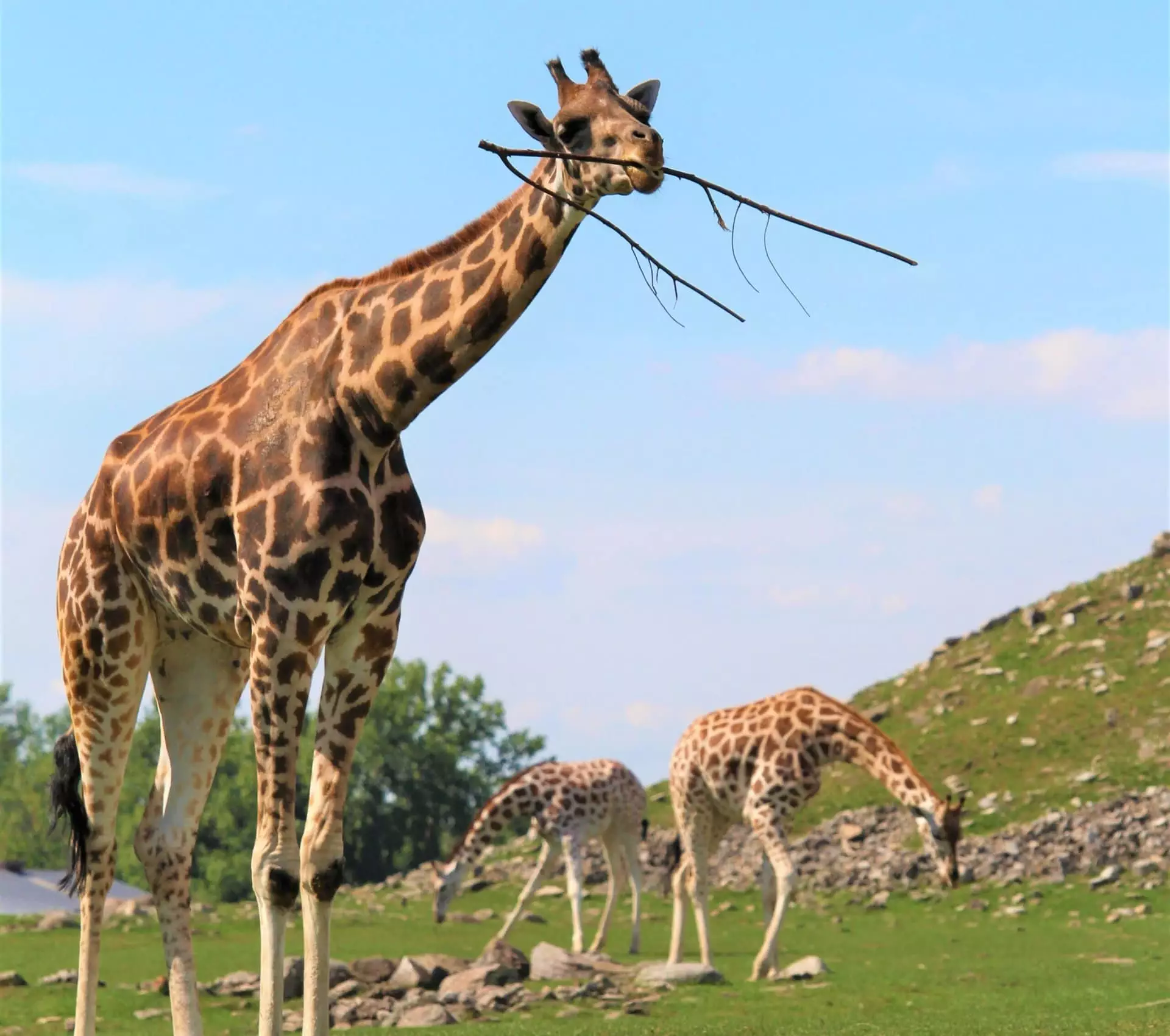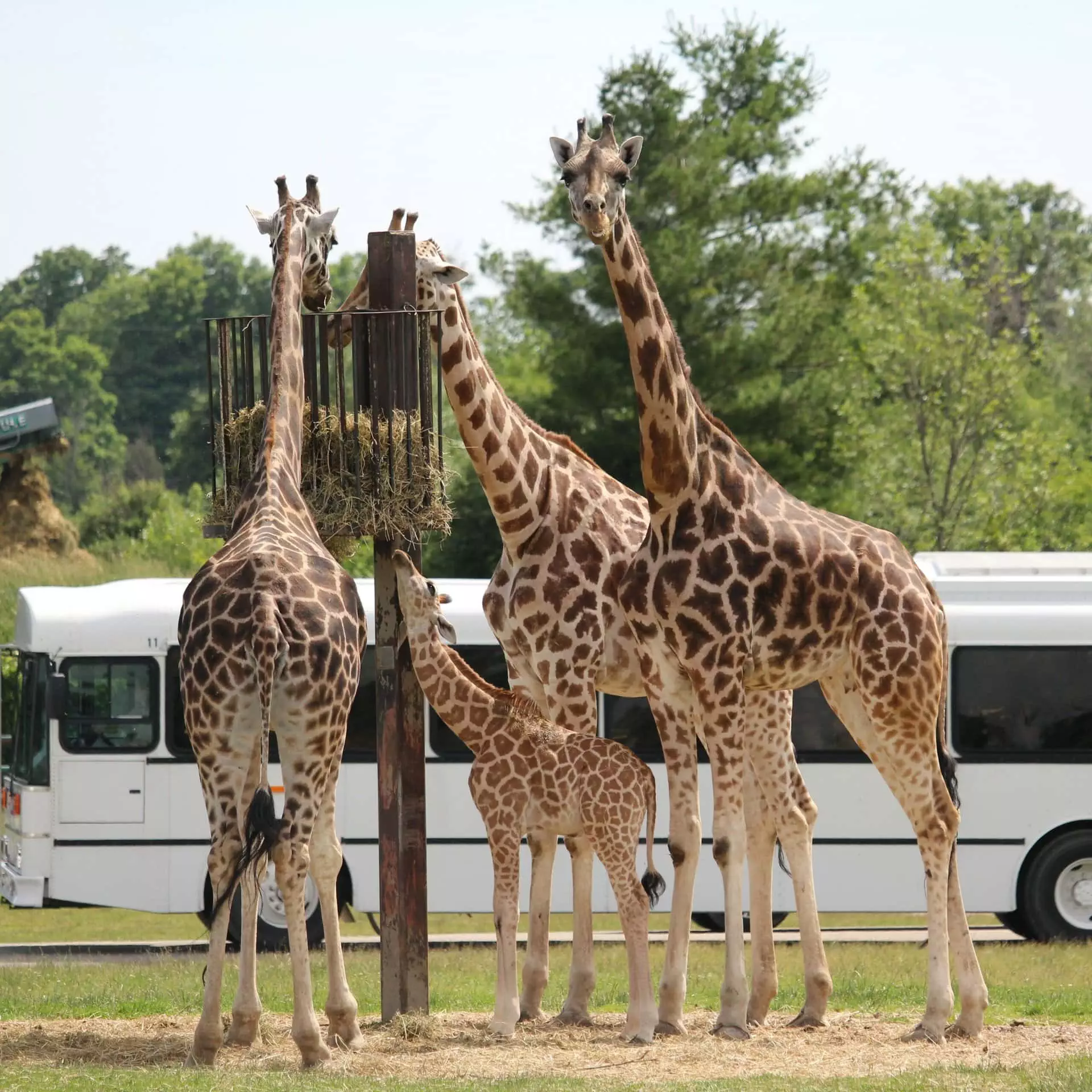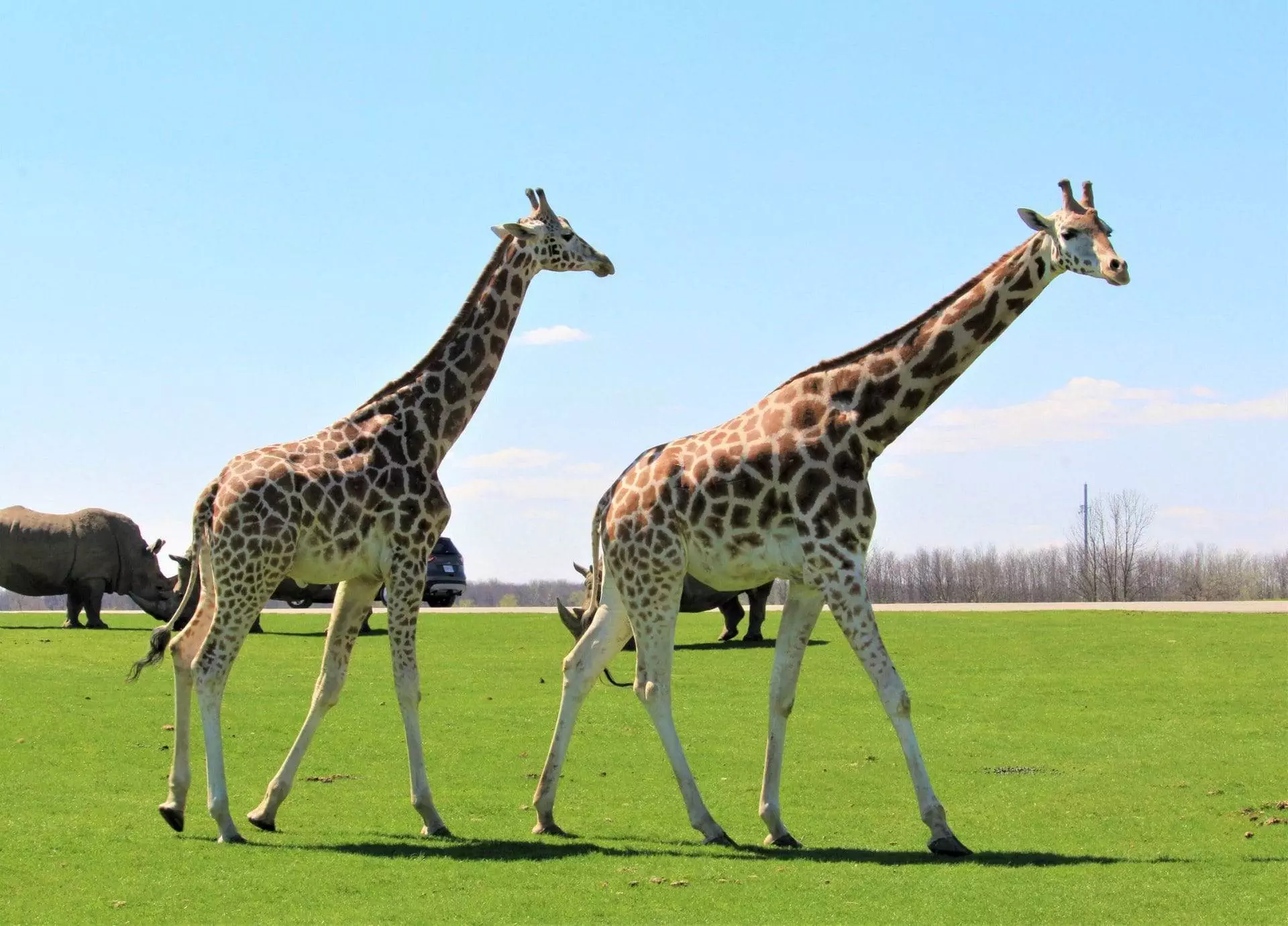Giraffe
Overview
The International Union for Conservation of Nature the global authority on the status of the natural world and the measures needed to safeguard it classifies the giraffe as “Vulnerable.” Efforts are needed to ensure the species’ survival in the future. There are 9 subspecies of giraffe and several of these are rare and under threat. Giraffe are found in savannahs, grasslands and open woodlands and as all giraffe do, face many challenges in their natural environment such as loss of habitat and habitat degradation.


OUR CONSERVATION PROGRAMME
African Lion Safari has maintained giraffe for over 30 years. Giraffe however, are slow to reproduce because of their long gestation period. Development of a successful breeding program and a full understanding of giraffe reproductive physiology therefore, requires a long-term commitment.
The unique body shape and size of the giraffe present challenges in the ability to perform husbandry and medical procedures. African Lion Safari has developed a management program that allows us to handle giraffe safely and efficiently. This program has allowed African Lion Safari to gather valuable information on giraffe reproductive physiology while maintaining our giraffe in optimum health and condition.
The regular collection of blood and fecal samples for hormone analysis and the performance of ultrasound examinations has enabled African Lion Safari to gather and correlate data with direct observation. Through these procedures decisions and predictions regarding reproduction can be made to improve success.
Our Future Goals
As well as improving reproductive viability and easier access for assisted reproduction techniques and procedures our giraffe management program has given us opportunities to monitor pregnancies via ultrasound and hormone analysis. African Lion Safari’s giraffe program hopes to continue its successful conservation of giraffe through active investigation of reproductive physiology and development of strategies to increase populations in the wild and under human care.







